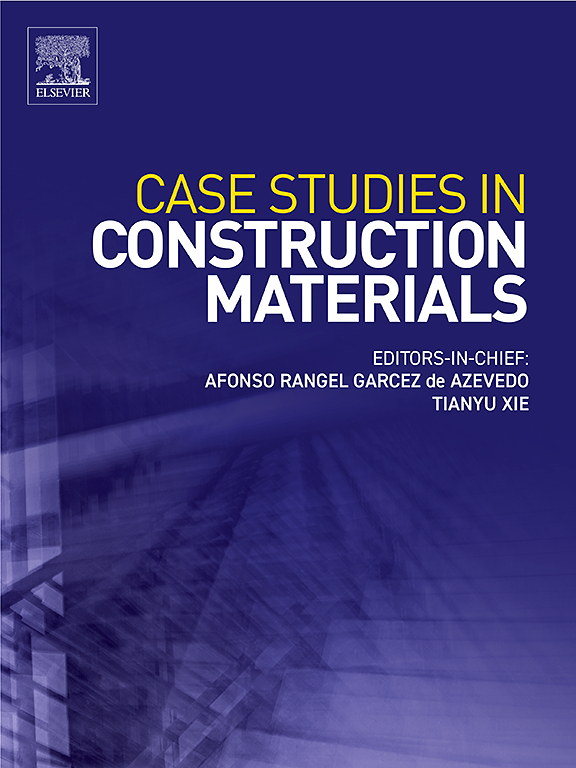A novel methodology for indirect application of hydrophobic agents into cement matrix: Superabsorbent polymers (SAPs) as a delivery medium
IF 6.6
2区 工程技术
Q1 CONSTRUCTION & BUILDING TECHNOLOGY
引用次数: 0
Abstract
Hydrophobic agents are one of the most commonly used means of prolonging the lifespan of cement-based materials. However, when water-repellent is added to the batch water it can interfere with cement hydration leading to deteriorated mechanical properties of the hardened material. To eliminate this drawback, a novel methodology of indirectly applying hydrophobic agents to cement-based materials is introduced. The presented approach uses super absorbent polymers (SAPs) as a delivery medium. SAP containing water-repellent is added to the fresh cement mixture, which ensures a gradual release of the admixture. The release is driven either by drying which generates moisture gradient or by compression of polymer particles by hydrates arising in their vicinity. Such mechanisms lead to a delayed dosage of the hydrophobic agent, which is when the partially hardened cement matrix is less vulnerable to interference compared to the fresh mixture. The effectiveness of the proposed methodology was verified in the extensive experimental program. Cement mortars of two water-to-cement ratios (0.4, and 0.5) were tested in terms of compressive strength, capillary absorption, and contact angle among others. Based on the obtained results it is concluded that the proposed methodology limits the negative impact of the hydrophobic agent on cement hydration. The mechanical performance of the samples modified with the indirectly dosed admixture is improved compared to the conventionally hydrophobized material in each analysed case. The results of isothermal calorimetry support the thesis. Additionally, the effectiveness of imparting hydrophobic characteristics to the cement matrix was as good as in the case of the conventional dosing. The mercury intrusion porosimetry, as well as thermogravimetric tests, were run to provide a deeper insight into the microstructure and composition of the modified material. Scanning electron microscopy was used to give a better insight into samples’ morphology. The novel methodology presented can also potentially be used to dose other types of admixtures that can interfere with cement hydration.
疏水剂间接应用于水泥基质的新方法:高吸水性聚合物(sap)作为输送介质
疏水剂是延长水泥基材料使用寿命的最常用手段之一。然而,当在批用水中加入防水剂时,它会干扰水泥水化,导致硬化材料的机械性能恶化。为了消除这一缺点,介绍了一种间接将疏水剂应用于水泥基材料的新方法。提出的方法使用高吸水性聚合物(sap)作为输送介质。将含有防水剂的SAP添加到新水泥混合物中,以确保外加剂的逐渐释放。释放是由干燥产生的水分梯度或由附近产生的水合物压缩聚合物颗粒驱动的。这种机制导致疏水剂的剂量延迟,因为与新鲜混合物相比,部分硬化的水泥基质不太容易受到干扰。在广泛的实验程序中验证了所提出方法的有效性。对水灰比为0.4和0.5的水泥砂浆进行了抗压强度、毛细吸收量、接触角等测试。结果表明,所提出的方法限制了疏水剂对水泥水化的负面影响。在每个分析案例中,与常规疏水材料相比,间接掺合剂改性样品的力学性能得到了改善。等温量热的结果支持了本文的结论。此外,将疏水特性赋予水泥基质的有效性与常规剂量的情况一样好。为了更深入地了解改性材料的微观结构和组成,进行了压汞孔隙度测试和热重测试。扫描电子显微镜用于更好地了解样品的形态。提出的新方法也可能用于给其他类型的外加剂添加剂量,这些外加剂可能会干扰水泥水化。
本文章由计算机程序翻译,如有差异,请以英文原文为准。
求助全文
约1分钟内获得全文
求助全文
来源期刊

Case Studies in Construction Materials
Multiple-
CiteScore
7.60
自引率
19.40%
发文量
842
审稿时长
63 days
期刊介绍:
Case Studies in Construction Materials provides a forum for the rapid publication of short, structured Case Studies on construction materials. In addition, the journal also publishes related Short Communications, Full length research article and Comprehensive review papers (by invitation).
The journal will provide an essential compendium of case studies for practicing engineers, designers, researchers and other practitioners who are interested in all aspects construction materials. The journal will publish new and novel case studies, but will also provide a forum for the publication of high quality descriptions of classic construction material problems and solutions.
 求助内容:
求助内容: 应助结果提醒方式:
应助结果提醒方式:


